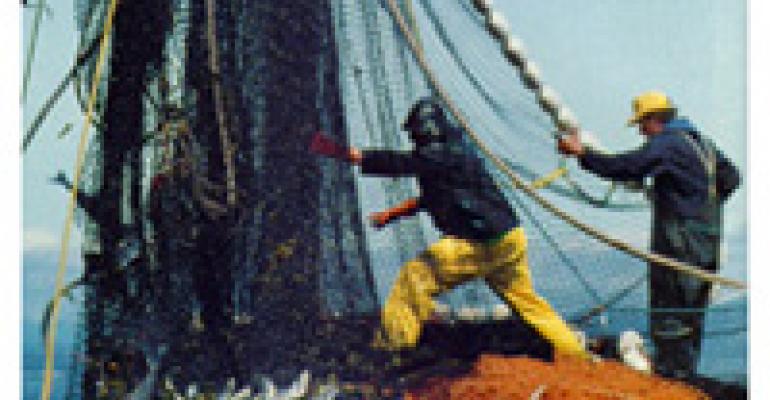
Obviously, seafood sustainability is a hot-button issue that’s going to get a lot hotter in the wake of the BP oil spill. But your restaurant may be on the right side of it already. Not sure if you are? A new guide from the Alaska Seafood Marketing Institute (ASMI) will tell you where you stand, and you can use the information in it to spruce up your menu language and further market your restaurant as “green.” Best of all, the guide is free.
We aren’t necessarily advocates for Alaska seafood. But given the current troubles in the Gulf of Mexico, we’re thinking that many operators might soon be looking north for new seafood options for their menus. The Gulf States provide the second-largest amount of wild-caught seafood to the U.S supply chain; Alaska is first. And because Alaska’s cold-water species are not direct one-to-one menu replacements for the warm-water species so abundant in the Gulf, it’s good to know what’s available.
Then there’s the sustainability factor. Whether or not an operator has strong personal feelings about fishery exploitation, many customers do. They want to eat species that live in clean waters and are managed for optimum sustainability. Like it or not, customers think it’s your job to be careful about the seafood you source and serve.
This issue endures because overfishing has depleted certain fish stocks to dangerously low levels all around the globe. That’s why few restaurants serve as much Atlantic cod or Chilean sea bass as they used to, why once-abundant redfish is seldom seen today on Louisiana menus and why grouper has become problematic for operators everywhere, particularly those in Florida.
Yet the market for seafood menu items based on a mild-tasting piece of fish that has white flesh and a pleasing texture is vast. So, given the sustainability issues surrounding Atlantic cod, grouper, sea bass and similar white-fleshed fish species operators once relied on to meet this demand, what options do you have?
ASMI is hoping you’ll turn to Alaska as a key source. Which is why it’s handing out free copies of the Alaska Whitefish Buyer’s Guide to full-service restaurant operators. The publication contains information on the several whitefish varieties the state’s seafood industry provides. A key selling point: each comes from sustainable stocks.
The guide also includes plenty of details about harvesting methods, resource management, processing, product forms, nutrition and seasonal availability. Menu language can let patrons know, for example, that the Alaskan whitefish you’re serving them is either line-caught or taken by trawlers whose nets are suspended so as to not tear up the sea floor. Such a detail encourages sustainability-minded customers to order these items.
The guide is free, so why not take a look? To get a copy, go to www.alaskaseafood.org/foodservice/practices/pages/buyerguide-whitefish/WhitefishBuyerGuide.pdf or call 800-806-2497.





